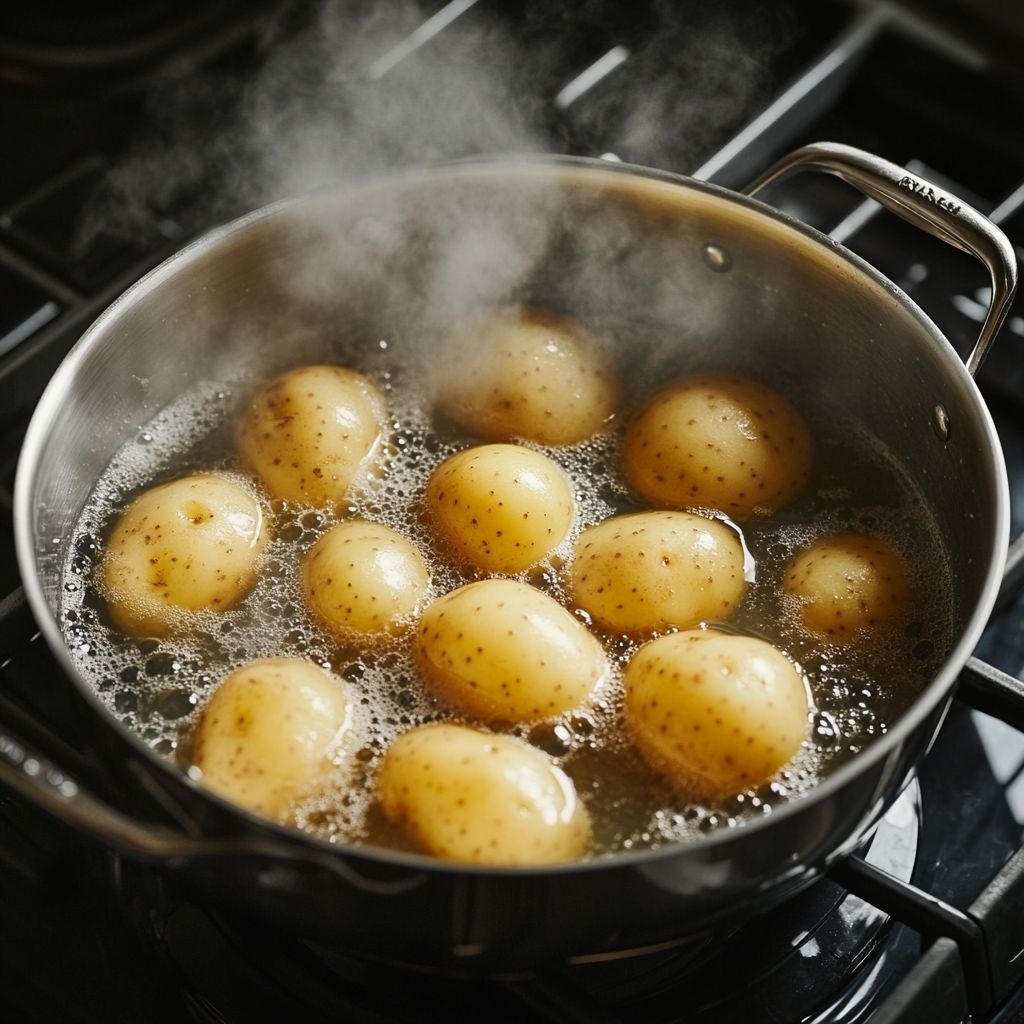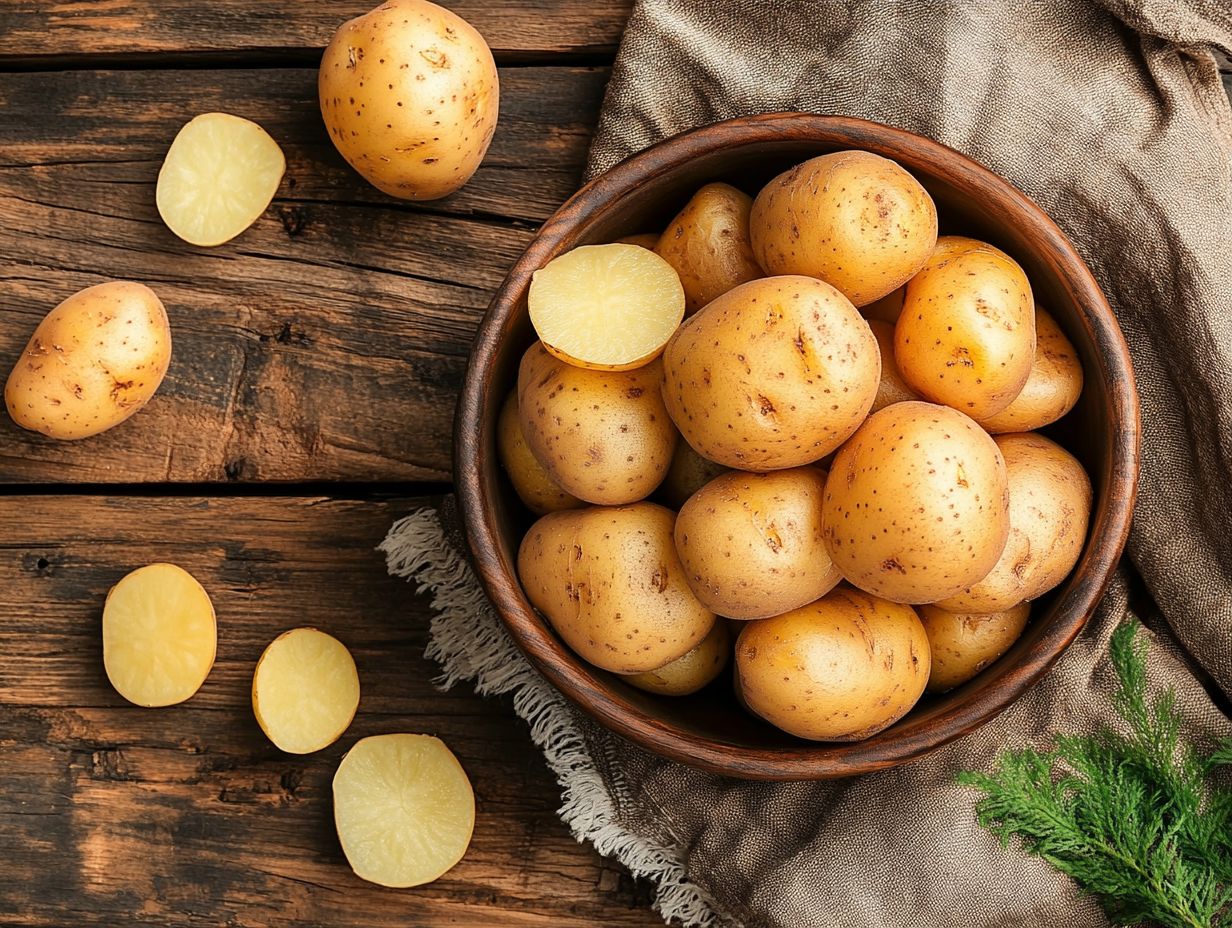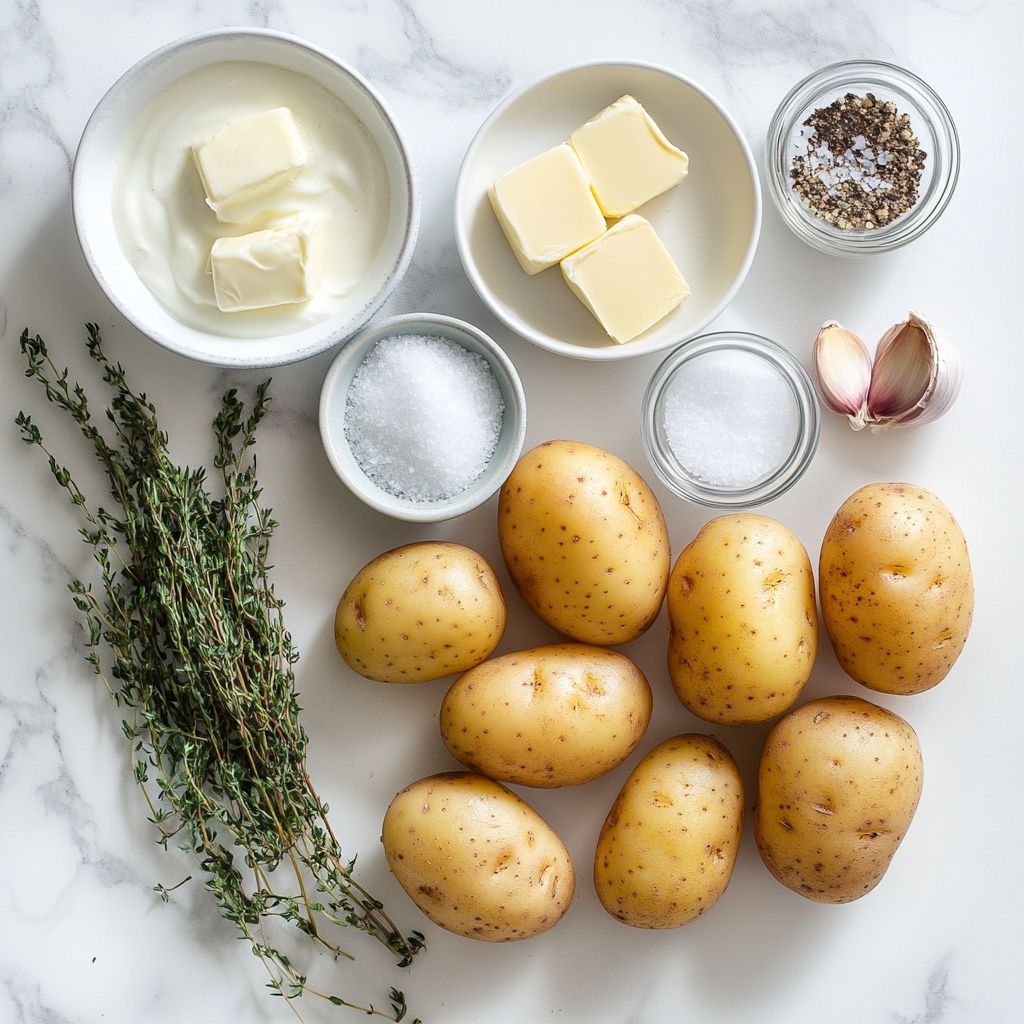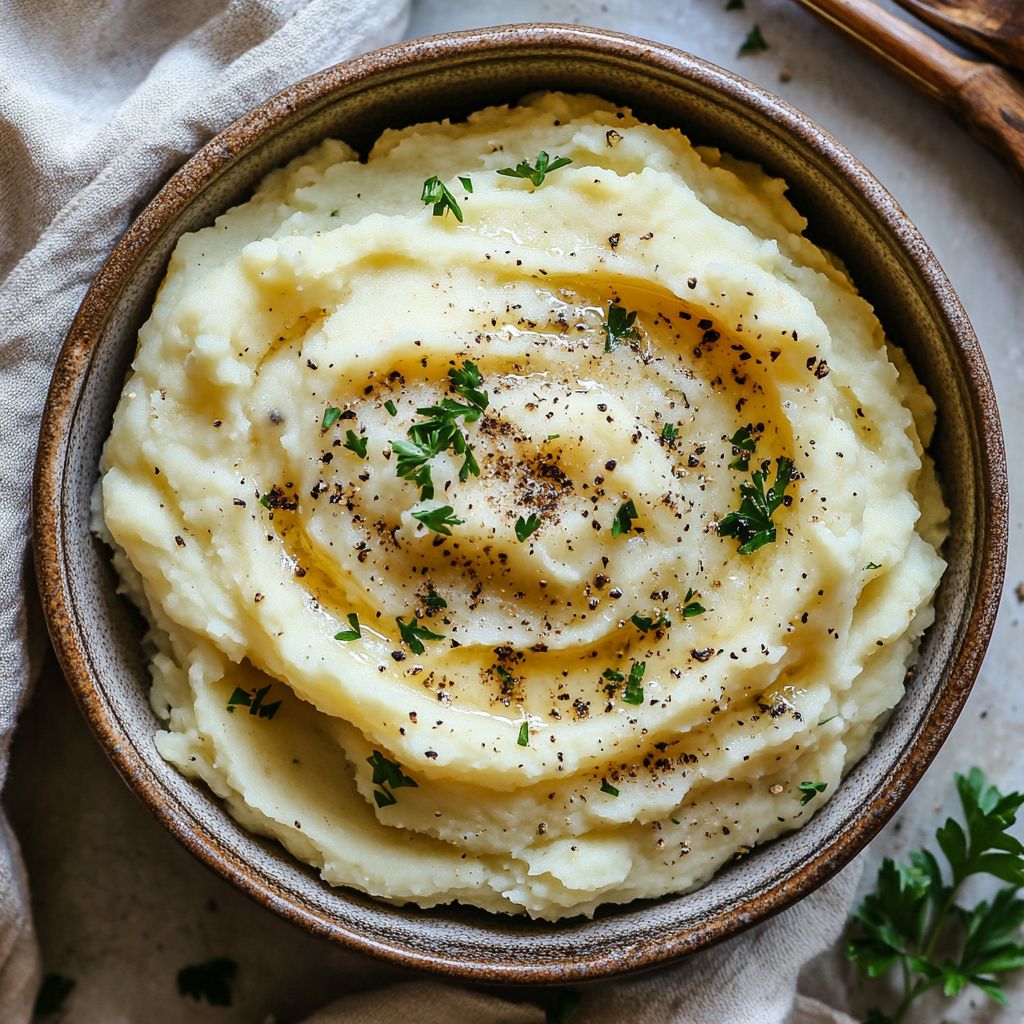
Yukon Gold potatoes have a special place in the heart of every home cook — and in mine, they bring back memories of cozy meals at Grandma’s house. Their buttery texture and golden color made every dish feel extra special, from her creamy mashed potatoes to crispy roasted wedges. Today, I’ve taken those comforting memories and reimagined them with a modern twist. In this article, we’ll explore what makes Yukon Gold potatoes unique, how to cook them perfectly, and why they belong in your kitchen rotation. Whether you’re baking, boiling, or frying, these golden gems can transform any meal.
Why Yukon Gold Potatoes Deserve a Spot in Every Kitchen
A Rich History of Golden Flavor
The story of Yukon Gold potatoes begins in the 1960s in Canada, where agricultural scientist Garnet Johnston crossbred a North American white potato with a Peruvian yellow variety. The goal? To develop a potato that combined a rich flavor with a smooth, waxy texture and vibrant golden flesh. That’s how Yukon Gold was born — named after the famous gold rush region of the Yukon Territory, and rightfully so, because this variety is culinary gold.
What sets Yukon Gold potatoes apart is their buttery taste and medium starch content. Unlike russets, which are starchy and fluffy, or red potatoes, which are waxy and firm, Yukons fall right in the middle. This makes them incredibly versatile. You can mash them to silky perfection, roast them until they’re crisp and golden, or even slice them into creamy gratins that melt in your mouth.
At AllFoody, we love turning everyday staples into memorable meals. And Yukon Golds are just that — everyday heroes. Their natural richness means you don’t need much butter or cream to bring out their best, which makes them great for both indulgent and lighter recipes. If you’re searching for smart, reliable ways to elevate your dishes, look no further.
While researching, I found a delightful twist on classic mashed potatoes in our creamy mashed cauliflower recipe that pairs beautifully with Yukon Golds for a healthier take. They also work wonders in a one-pan chicken and potatoes dinner, absorbing flavor while holding their shape beautifully.
The Science Behind Their Texture and Taste
One of the biggest reasons chefs and home cooks alike adore Yukon Gold potatoes is their balanced starch profile. With just the right amount of moisture and density, they hold their structure better than high-starch varieties but still offer enough softness for mashing or baking. Their thin, tender skin is another perk — no need to peel unless you really want to.
This ideal texture makes them a go-to choice for weeknight dinners and holiday spreads alike. Yukon Golds develop an appealing golden crust when roasted at high heat, yet stay creamy inside. When boiled, they become soft without turning waterlogged. And in soups or stews, they hold up without disintegrating — a major plus when crafting meals ahead of time.
This scientific sweet spot explains why they outperform other types in many classic dishes. Whether you’re crafting a golden potato salad, a luscious puree, or a rustic skillet hash, they adapt beautifully. Try swapping them into our loaded baked potato soup for a naturally creamier base, or use them in a roasted vegetable medley where their edges caramelize like magic.
In upcoming parts, we’ll dive into how to select, store, and cook Yukon Golds like a pro, along with recipe ideas you’ll turn to again and again. But first, let’s explore how to spot high-quality Yukon Golds in the store and make them last in your pantry.

Ingredients
- 2 lbs Yukon Gold potatoes peeled and chopped
- 4 tbsp unsalted butter
- 1/2 cup heavy cream warm
- 2 cloves garlic minced
- Salt to taste
- Freshly ground black pepper
- Fresh parsley for garnish optional
Instructions
- 1. Place chopped Yukon Gold potatoes in a large pot, cover with cold salted water, and bring to a boil.
- 2. Simmer for 15–20 minutes or until fork-tender, then drain well.
- 3. Return potatoes to the pot, add butter, garlic, and warm cream.
- 4. Mash until smooth and creamy using a hand masher or mixer.
- 5. Season with salt and black pepper to taste.
- 6. Serve warm, topped with fresh parsley if desired.
Notes
Nutrition
How to Select and Store Yukon Gold Potatoes Like a Pro
Picking the Perfect Yukon Gold Potatoes
When you’re standing in the produce aisle or shopping at your local farmer’s market, it’s easy to grab a bag of potatoes without much thought. But with Yukon Gold potatoes, selecting the right ones makes all the difference in how your dish turns out. Always look for potatoes that are firm and smooth, with a bright golden-yellow skin. They shouldn’t have any green spots, soft patches, or sprouting eyes — those are signs of age or poor storage.
If you’re buying them loose, avoid potatoes that feel too light for their size; that often means they’ve lost moisture and may cook unevenly. If pre-packaged, check that the bag is ventilated and moisture-free to prevent rot. Yukon Golds are slightly thinner-skinned than russets, which makes them more prone to bruising. Handle them gently and store them away from items like onions, which can accelerate spoilage.
Whether you’re planning a hearty homemade potato gratin or using them in a comforting chicken pot pie bake, quality Yukon Golds will give you that velvety texture and rich flavor you expect.
Storing for Freshness and Flavor
Storage might seem like an afterthought, but how you treat your potatoes once you bring them home plays a huge role in how well they perform in recipes. Yukon Gold potatoes should always be kept in a cool, dark place — think pantry or basement — with plenty of airflow. Never store them in the refrigerator, as cold temps convert the potato’s natural starches into sugars. That shift in chemistry not only affects the flavor, making them oddly sweet, but it also darkens them when cooked.
The best storage temperature for Yukon Golds is between 45–50°F (7–10°C). Use a basket or paper bag rather than plastic, as trapped moisture can lead to mold and decay. If your potatoes do start sprouting, don’t panic — just cut off the sprouts and any green parts before cooking.
Stored properly, Yukon Gold potatoes can last two to three weeks without losing quality. Still, it’s best to use them sooner rather than later, especially for recipes that rely on their natural creaminess like garlic mashed potatoes or sheet pan dinners where their texture really shines.
Coming up in Part 3: we’ll dive into cooking techniques that highlight the unique characteristics of Yukon Golds, from crispy roasted sides to silky purees that outshine any boxed mix. Trust me — you’ll never look at a potato the same way again.

Cooking Yukon Gold Potatoes to Perfection
Roasting, Boiling, and Beyond: The Best Methods
Cooking Yukon Gold potatoes is all about enhancing their natural buttery flavor and creamy texture. Because of their medium starch content, they adapt to a variety of methods — each bringing out a different strength. Roasting is perhaps the most beloved way to prepare them. When cut into wedges or cubes and tossed with olive oil, salt, and herbs, they caramelize beautifully on the outside while staying pillowy inside. Set your oven to 425°F for optimal results, and don’t overcrowd the pan — that’s the secret to crispy edges.
Boiling works best for mashed potatoes or potato salads. Since their skin is so thin, you don’t even need to peel them unless you prefer a super-smooth texture. For ultra-creamy mashed Yukon Golds, try adding a bit of sour cream or cream cheese for a tangy depth — or mix them into our loaded mashed potato casserole for a crowd-pleasing twist.
They’re also amazing in stovetop recipes like skillet breakfast hashes or even as a base for gnocchi. Their firm but tender consistency means they don’t fall apart during cooking, which makes them perfect for soups and stews too. Whether you’re searing, simmering, or baking, Yukon Golds are always up for the task.
Must-Try Recipes Featuring Yukon Gold Potatoes
Yukon Gold potatoes aren’t just a side dish — they can be the star of the plate. One go-to is the classic garlic mashed Yukon Golds, a rich and silky version that pairs beautifully with roasts, grilled chicken, or even a vegetarian mushroom gravy. For something more rustic, try a crispy smashed potato dish: boil them whole, flatten gently, then roast until golden. It’s a great option alongside herb-crusted salmon or grilled vegetables.
In colder months, there’s nothing like a Yukon Gold potato soup with leeks or bacon. Their texture thickens the broth naturally without the need for added cream. They also shine in comfort classics like potato au gratin or shepherd’s pie — the kind of recipes that turn simple ingredients into deeply satisfying meals.
For lighter options, Yukon Golds hold up well in summer potato salads with a vinegar-based dressing. Their flavor is subtle enough to let herbs, mustard, or shallots shine, while still offering that comforting potato base everyone loves. Want to add something seasonal? They pair wonderfully with roasted asparagus or in a spring veggie skillet.
Whether you’re planning a weeknight dinner or prepping a potluck dish, Yukon Gold potatoes are versatile, dependable, and full of possibilities. Next, we’ll show you how to troubleshoot common cooking mistakes and keep your potatoes tasting their best — every time.
Troubleshooting Yukon Gold Potatoes & Chef Tips
Common Mistakes When Cooking Yukon Golds
Even the most versatile ingredients come with a few quirks, and Yukon Gold potatoes are no exception. One of the biggest mistakes is overcooking them during boiling. Since they’re softer than russets, they can turn mushy fast. Always start them in cold, salted water and bring them up to a simmer, not a rolling boil. This ensures they cook evenly inside and out.
Another error? Refrigerating them. As mentioned earlier, storing Yukon Golds in the fridge causes their starches to convert into sugar, which leads to an odd sweetness and a gritty texture when cooked. Stick to cool, dry, and dark storage — and always inspect for sprouting before use.
Peeling them too early is also unnecessary and can strip away both nutrients and flavor. Their skin is thin and tender, and in dishes like rustic potato salad or crispy oven-roasted sides, the skin adds texture and visual appeal.
Finally, don’t forget seasoning! Yukon Golds have a naturally buttery taste, but they shine even brighter with bold flavors. Fresh garlic, rosemary, paprika, or even lemon zest elevate their richness into something truly special.

Chef André’s Favorite Tips for Perfect Potatoes
At AllFoody, we believe even a humble potato deserves chef-level attention. Here are some tested tips from Chef André to help your Yukon Golds reach their full potential:
- Parboil before roasting: Boil them for 8–10 minutes first, then drain, dry, and roast. This guarantees that crisp outside and creamy center every time.
- Smash & roast: Flatten boiled Yukon Golds gently with a fork or glass, brush with olive oil, and roast at high heat. This technique adds irresistible texture and flavor.
- Use stock instead of water: When making mashed potatoes or soup, cook your Yukon Golds in chicken or veggie stock to layer in more flavor from the start.
- Double-bake for creamy results: Want the ultimate baked potato? Bake your Yukons once, scoop and mash the insides with sour cream and cheese, then return them to the skins and bake again. Perfection.
And if you love meal prep, Yukon Golds are your friend. Cook a big batch of roasted wedges on Sunday, then reuse them in breakfast scrambles, wraps, or soups throughout the week.
Are Yukon Gold potatoes better than russet potatoes?
It depends on what you’re making. Yukon Gold potatoes are creamier and have a buttery flavor, which makes them perfect for mashing, roasting, or gratins. Russets are starchier and fluffier — great for baked potatoes or crispy fries. For recipes like creamy potato bakes or garlic mashed potatoes, Yukons have the edge.
Can you eat the skin of Yukon Gold potatoes?
Yes! The skin is thin, smooth, and packed with nutrients. It’s completely edible and adds texture and flavor, especially when roasting or baking. For dishes like oven-crisp smashed potatoes, leaving the skin on makes them even better.
Why are my Yukon Gold potatoes turning black after cooking?
This usually happens from oxidation — when cut potatoes are exposed to air or cold temperatures before or after cooking. Avoid refrigerating raw or cooked Yukon Golds, and try adding a splash of vinegar or lemon juice to water while boiling to prevent discoloration.
Can you use Yukon Gold potatoes in soup?
Absolutely. Yukon Gold potatoes hold their shape in broth, add natural creaminess, and blend beautifully in pureed soups. Try them in hearty vegetable soups or creamy leek and potato versions for excellent texture and flavor.
Conclusion: The Everyday Gold You’ll Keep Coming Back To
Yukon Gold potatoes aren’t just another ingredient — they’re a dependable, flavorful base for hundreds of meals. From nostalgic mashed potatoes to modern sheet pan dinners, their rich, creamy texture and versatility make them a must-have in every kitchen. By choosing quality Yukon Golds, storing them properly, and using smart cooking techniques, you’ll bring out their full potential every time.
At AllFoody, Chef André invites you to explore your creativity with these golden gems. Whether you’re experimenting with new flavors or re-creating family classics, Yukon Gold potatoes help you cook smarter, tastier, and with more joy. Ready to make something golden tonight?
